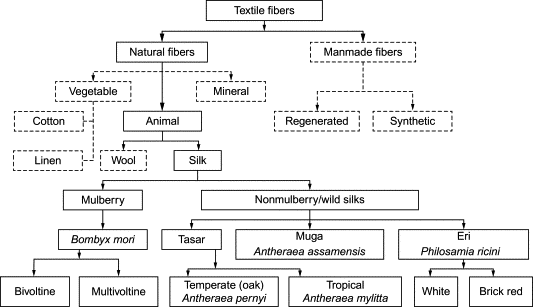Silk is more than just a luxurious fabric—it’s a legacy of elegance, craftsmanship, and nature’s genius. Known for its soft sheen, delicate texture, and royal aura, silk has graced the wardrobes of emperors, queens, and designers alike. But how does this extraordinary fiber travel from a tiny cocoon to a high-fashion couture gown?
In this blog, we will explore the complete journey of silk, its properties, production process, types, uses in men’s and women’s garments, pros and cons, burning test, and why silk continues to be the epitome of elegance in the textile world.
The Birth of Silk: From Cocoon to Fiber
Silk originates from the cocoon of the silkworm, primarily the Bombyx mori, which feeds exclusively on mulberry leaves. The process of silk production is known as sericulture. Here’s how silk is created:
🌀 1. Silkworm Life Cycle
- Egg → Larva → Pupa → Moth
- During the pupa stage, the silkworm spins a cocoon made of a single continuous filament, which can be up to 900 meters long.
🧵 2. Harvesting the Cocoon
- The cocoons are collected and boiled to soften the sericin (a natural glue-like protein).
- This process kills the pupa and makes it easier to reel the silk fibers without breaking them.
🪡 3. Reeling and Spinning
- The softened cocoon is unwound carefully into silk threads.
- Several filaments are combined to make a silk yarn strong enough for weaving.
🧶 4. Dyeing and Weaving
- The silk is then dyed using natural or synthetic dyes and woven into various types of fabric: satin, chiffon, crepe, organza, and more.
This entire transformation from cocoon to couture is what makes silk one of the most labor-intensive and precious textiles in the world.

Properties of Silk
Silk isn’t just prized for its beauty—its scientific properties also make it unique:
- Lustrous Sheen: Thanks to its triangular prism-like fiber structure, silk reflects light at multiple angles.
- Soft and Smooth Texture: Almost frictionless against the skin.
- Strong Natural Fiber: Despite its softness, silk is surprisingly strong.
- Elasticity: Returns to original shape after mild stretching.
- Thermo-Regulating: Keeps you cool in summer and warm in winter.
- Hypoallergenic: Resists dust mites and mold, making it skin-friendly.
- Good Moisture Absorption: Absorbs up to 30% of its weight without feeling damp.

Burning Test for Silk (Fabric Identification)
To identify real silk, a burn test can be helpful:
- Smell: Like burning hair (since both are protein-based).
- Behavior: Burns slowly, self-extinguishes when flame is removed.
- Ash: Crushable black bead.
- No Black Smoke: Unlike synthetic fibers, real silk won’t release heavy black smoke.
Note: Always perform this test safely and only on fabric edges or samples.
Types of Silk
Silk is not one-size-fits-all. Here are some of the most popular types:
- Mulberry Silk: The highest quality, produced by Bombyx mori. Soft, durable, and smooth.
- Tussar Silk: Wild silk with a textured feel and natural gold sheen.
- Eri Silk: Also called “peace silk,” harvested without killing the moth.
- Muga Silk: Golden yellow silk from Assam, known for its natural shimmer.
- Chiffon, Crepe, Satin & Organza: Fabric weaves made from silk, each with a different feel and drape.
Men’s Garments Made from Silk
Silk is a status symbol in men’s fashion, especially for festive and formalwear. Popular garments include:
- Shirts: Especially in luxury and wedding wear.
- Sherwanis & Kurtas: Embroidered or plain, silk elevates the look.
- Ties and Bowties: Preferred for their smooth drape and sheen.
- Lining Material: Inside suits and jackets for comfort and elegance.
- Scarves and Stoles: Light yet warm, perfect for winter fashion.
- Silk Pajamas and Robes: Seen in luxury loungewear collections.
Women’s Garments Made from Silk
Silk is a staple in women’s fashion, from traditional wear to high-end couture.
🧕 Ethnic Wear:
- Sarees: From Banarasi to Kanjeevaram, silk sarees are iconic.
- Lehengas & Anarkalis: Wedding and festive favorites.
- Dupattas: Embellished or plain, silk dupattas add grace.
👗 Western Wear:
- Silk Dresses: Especially cocktail and evening gowns.
- Blouses and Tops: Lightweight and sophisticated.
- Jumpsuits and Skirts: Designed for flow and luxury.
- Scarves and Shrugs: Accessory essentials.
🛌 Nightwear and Lingerie:
- Nightgowns, camisoles, robes, and bralettes are often crafted in silk for comfort and sensuality.
Silk in the Beauty and Wellness Industry
Silk is not just for fashion—it plays a growing role in skin and hair care too:
- Silk Pillowcases: Reduce frizz and facial wrinkles.
- Silk Eye Masks: Cooling, hypoallergenic comfort.
- Hair Wraps and Bonnets: Prevent breakage and retain moisture.
Other Uses of Silk
- Home Furnishings: Curtains, upholstery, and cushion covers.
- Luxury Bedding: Silk bedsheets and duvet covers.
- Accessories: Silk handbags, belts, and footwear linings.
- Religious and Cultural Attire: Used in traditional rituals and ceremonies globally.
Pros of Silk
- ✔️ Luxurious and elegant appearance
- ✔️ Breathable and moisture-wicking
- ✔️ Long-lasting with proper care
- ✔️ Naturally hypoallergenic
- ✔️ Versatile for all climates
- ✔️ Biodegradable and sustainable (when ethically sourced)
Cons of Silk
- ❌ Expensive compared to other fabrics
- ❌ Requires gentle care (dry clean or hand wash only)
- ❌ Prone to wrinkles and water spots
- ❌ Fades with exposure to sunlight
- ❌ Vulnerable to stains and body oils
- ❌ Ethical concerns in traditional sericulture (moth killing)
Ethical Silk Alternatives (Cruelty-Free Silk)
Many brands today are switching to Ahimsa Silk or Peace Silk, where the moth is allowed to emerge naturally before reeling the fiber. Though this results in shorter fibers and higher costs, it appeals to eco-conscious and vegan consumers.
Silk and Sustainability: The Bigger Picture
Though silk is biodegradable and a natural fiber, conventional sericulture has its environmental and ethical downsides:
- High Water Consumption in mulberry farming
- Pesticides used in non-organic farming
- Energy-Intensive Processing
- Animal Welfare concerns with traditional silk extraction
Brands that practice organic silk farming and use closed-loop dyeing systems are taking steps to make silk more sustainable.
Silk in Global Fashion & Couture
From Paris runways to Indian bridal markets, silk is an undisputed favorite. Top designers like Chanel, Sabyasachi, Versace, Manish Malhotra, and Dior continue to use silk in their premium collections.
Whether it’s a minimalist silk blouse or an embroidered couture gown, silk holds a timeless charm that few other fabrics can replicate.
Conclusion: Why Silk Still Reigns Supreme
Silk is not just a fabric—it’s a story of nature, artistry, and tradition woven into a delicate yet durable thread. Despite its high maintenance and cost, the comfort, elegance, and versatility that silk offers makes it worth the investment.
Whether you’re a fashion designer, textile student, or simply a silk enthusiast, understanding the journey from cocoon to couture gives you a deeper appreciation for this magical fiber.
Call to Action:
Need help sourcing quality silk fabrics for your brand? Want to create a silk-based fashion collection with professionally crafted techpacks?
👉 Contact us at [Your Business Name] – We provide custom techpack creation, fabric sourcing support, and fashion consultation to bring your silk dreams to life.
Table of Contents
Toggle


